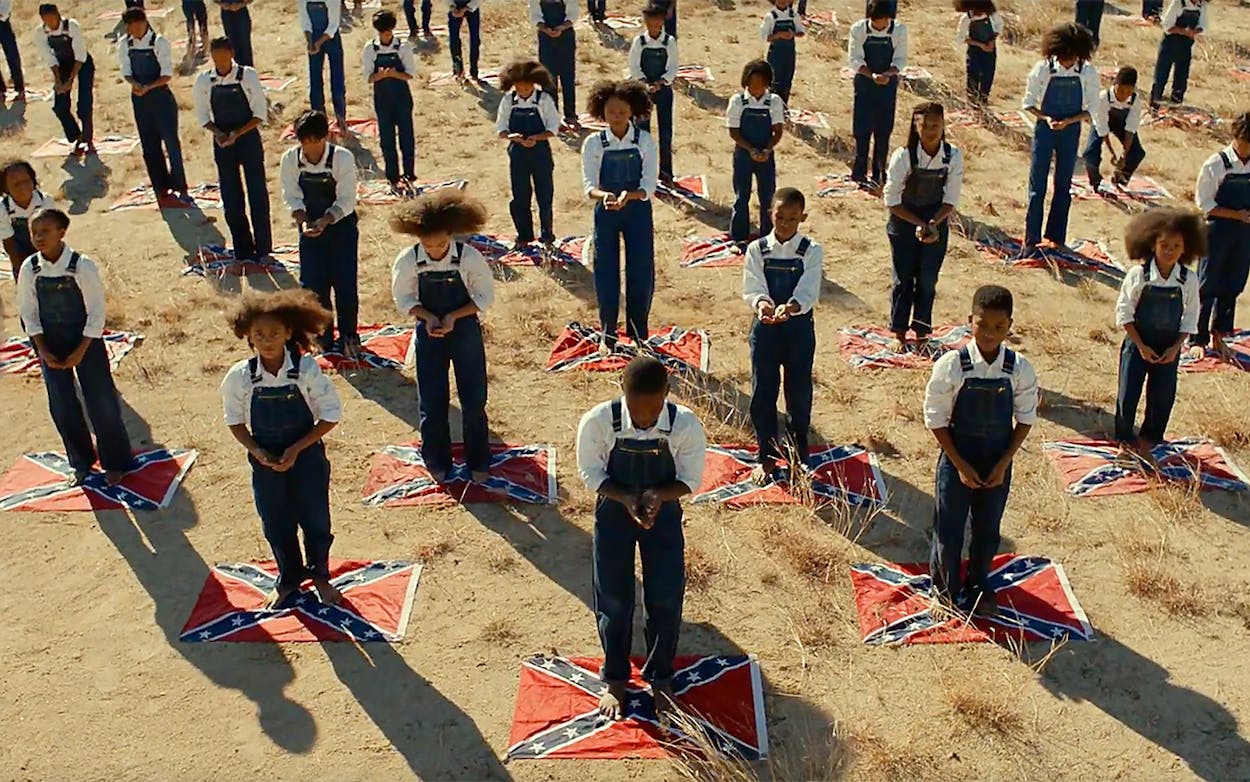Gary Clark Jr. is fed up. That’s the first takeaway from his new single, “This Land,” which dropped with a music video on Thursday morning. The song opens with the words “paranoid and pissed off” and only gets more incendiary from there, accompanied by stunning visuals—of Confederate flags, of black children haunting a plantation landscape, of Clark himself in spaces built to be hostile toward black Americans—and the sort of righteous rage that Clark exudes with his voice, his guitar, his face.
The second thing to take away from “This Land” is that Clark has something to say, and he’s fully in a position to say it. Clocking in at over six and a half minutes, “This Land” is perhaps the first truly great song of Clark’s career, a defiant, statement-piece anthem that fits alongside pieces like Childish Gambino’s “This is America” and Beyoncé’s “Formation” in its vocal addressing of racism in America.
Several moments within the “This Land” video, which was directed by Savanah Leaf, reference visual antecedents in recent culture. Clark plays guitar in an antebellum hallway that looks a bit like the one Beyoncé dances in from “Formation.” Shots of a young boy in the water recall the Oscar-winning Moonlight. Horror movie-style shots of the boy’s head centered in the frame, bathed in blue light and with tears streaming down his face, recall Get Out. And the most resonant themes from these cultural touchstones—racism, the artifacts of the South, the ability of black children to find space for themselves in a country that’s often unsafe for them—run through “This Land,” too. Rolling Stone described the video as “a scathing account of Trump-era racism,” but the use of Confederate flags and historic imagery throughout show that Clark’s using a much wider lens.
That generational message is something that Clark is uniquely equipped to address. On his first two albums (and in other spots where he’s appeared, like his Lincoln car commercials), he’s largely been marketed in the role of a modern-day bluesman, a living avatar for the black musicians who invented the blues in the days before white artists co-opted the form. The kind of music that Clark plays has roots as old as the Confederate flags lining mailboxes on the rural Texas streets we see in the opening frames of the video, and as old as the plantation house—with a lynching tree in the yard—that he takes ownership of as he sings, “I’m America’s son, this is where I came from.”
In the video’s final moments, there’s an outro that doesn’t appear on the single version of “This Land.” In this version, Clark’s rock and roll explosion cuts off abruptly, and switches instead to an acoustic guitar. We see him sitting on the porch, playing a more peaceful melody (“The Governor,” another track from the forthcoming album) for the little boy who’s haunted the scene for the past six minutes. It’s a cap to an exhausting explosion of emotion, a moment of harmony that Clark earns after expressing his rage and defiance—this land is his land, he sings throughout the song. In the closing moments, he shows us what he’ll do with it when he’s given a chance to rest.
- More About:
- Music
- Gary Clark Jr.








